![]()
|
|
|
Stoke-on-Trent - Potworks of the week |
The Nile Street Works, Burslem
|
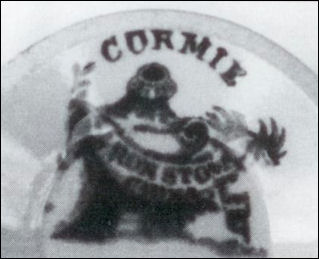 John Cormie blue printed Iron Stone pot R.K. Henrywood Staffordshire Potters |
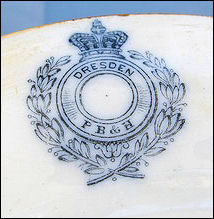 P B & H Pinder, Bourne & Hope |
 Pinder, Bourne & Co at the Nile Street Works, Burslem |
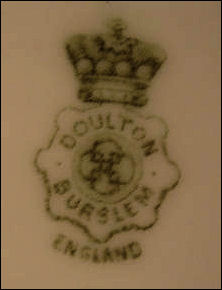 Doulton, Burslem, England |
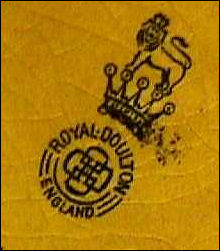 Royal Doulton |
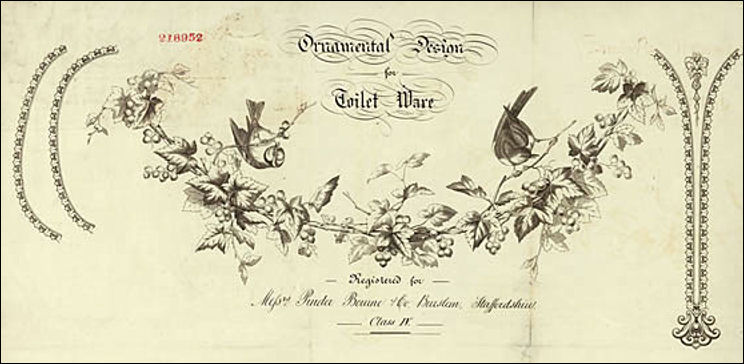
Ornamental Design for Toilet
Ware. Registered in May 1868 for Messrs Pinder Bourne & Co, Burslem
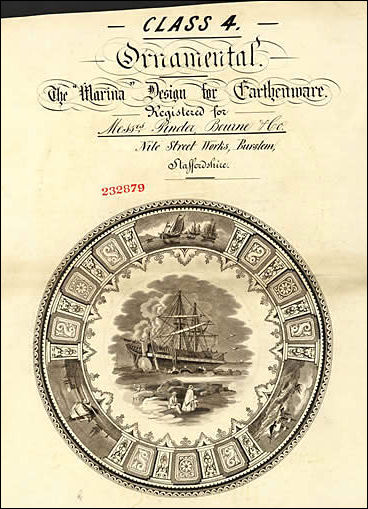
"Marina"
Design for Earthenware. Registered Sept 1869 for
Messrs. Pinder Bourne & Company. Nile Street Works, Burslem
- The National Archives
-
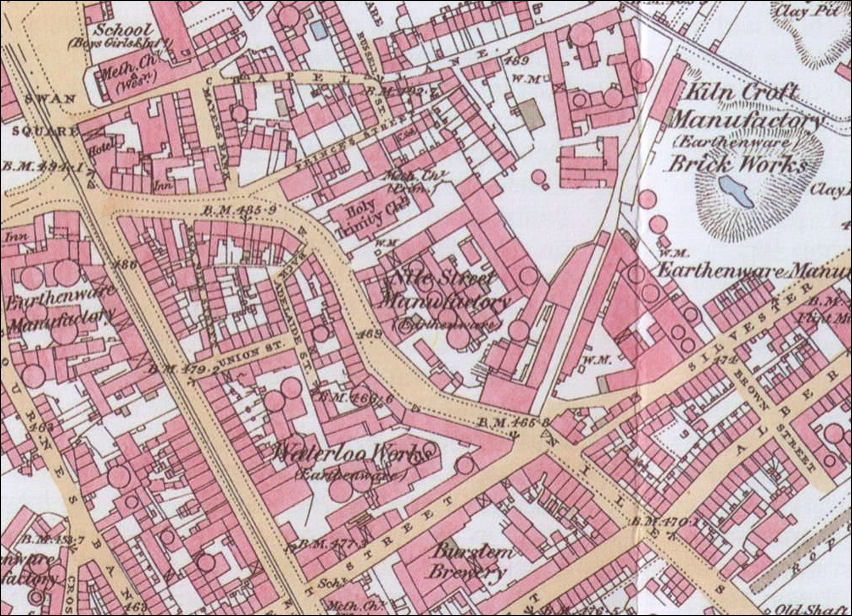
1877 map of the
Nile Street Potworks
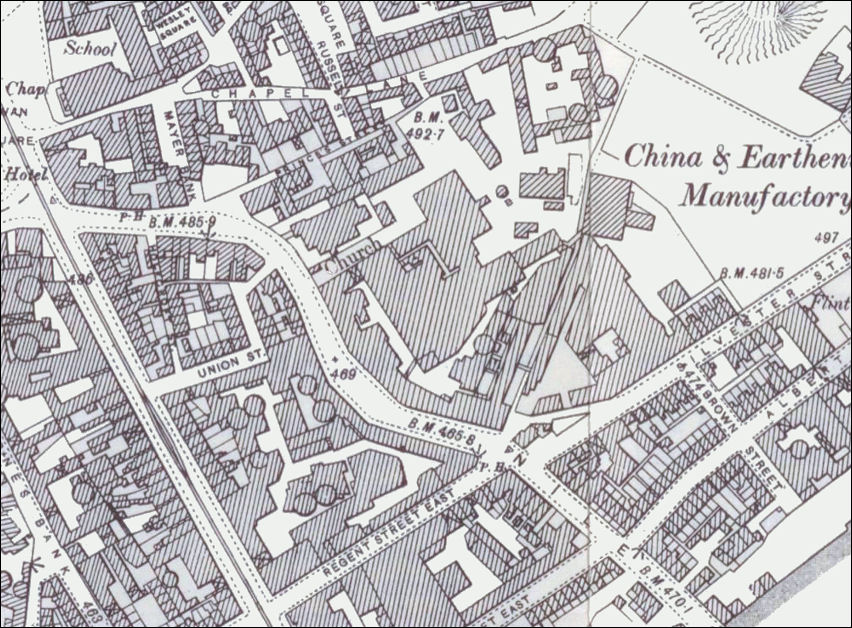
1898 map of the
Nile Street Potworks
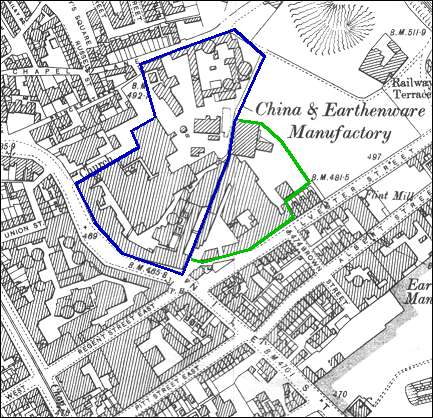
|
1898 map - the works marked in blue are those of Doulton & Co. The works outlined in green were those of Holmes, Plant & Madew (subsequently Holmes & Plant) - these works were on the corner of Nile Street and fronted Sylvester Street. Later these works were made part of Doulton’s Nile Street factory |

Google map of the
Nile Street Works
c.2008 - after closure of
the works but before demolition

the Nile Street
Works c.2008
after closure of the works
but before demolition
- Bing maps -
from: 1907 Staffordshire Sentinel 'Business Reference Guide to The Potteries, Newcastle & District'
|
Nile Street (Waterloo Road) 1 Moulton, George, grocer and confectioner 3 Warburton, John William, tobacconist & hairdresser 5 Gater, Mrs. Emma, general dealer 7 Mee, Robert J., Blue Ball (F.L.) 11 Jones, John, salesman and pawnbroker — Here is Mayer Bank — — Here is Prince Street — 13 Berrisford, Mrs. Fanny. grocer & provision dealer. Sneyd
Church Doulton & Co., Ltd., sanitary, china, and earthenware manufacturers, Nile Street Works 21 Beckensall, Thomas Alder, Crown and Anchor (B.H.) —Here is Sylvester Street— 27 Spooner, Thos., refreshment rooms 29 Mandley, dresser 31 Cooper, John, sanitary presser. 33 Green, Thomas S., grocer, baker, & provision dealer 37 Lynch, Jno., potter's printer 39 Harding, William, miner 41 Dunleany, Edward, potter 4 3 Stoker, Albert, labourer 45 Barlow, Wm., plumber and decorator —Here is Albert Street— 47 Pack, Wm., Durham OX (B.H.) 49 Podmore, John, potter 51 Leigh, Wm., hairdresser 53 Bowcock, Mrs. Lizzie 55 Bowcock, Wm.,clogger —Here is Back Nile Street— 57 Moss, Mrs. Elizabeth, fish and tripe dealer. Sneyd Collieries, Ltd., colliery proprietors. Bew and Beech, coal merchants —Here is Hot Lane— |
|
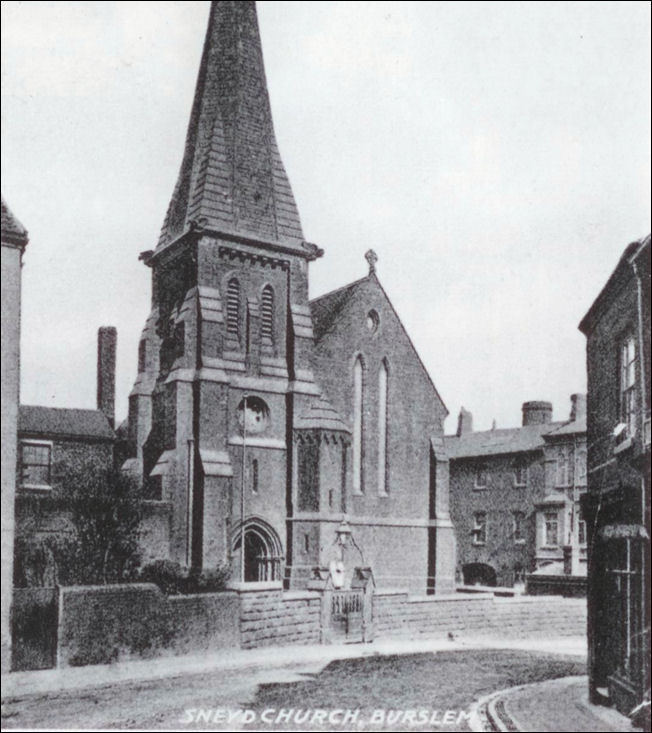
Postcard of Sneyd Church (Holy Trinity), Nile Street, Burslem
|
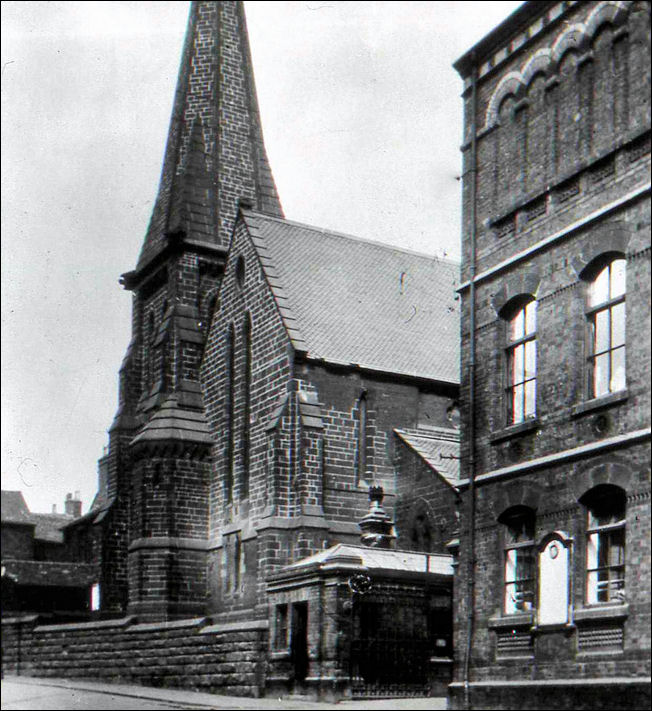
another
view of the Holy Trinity Church on Nile Street, Doulton's China works to the
right
photo: Ewart Morris
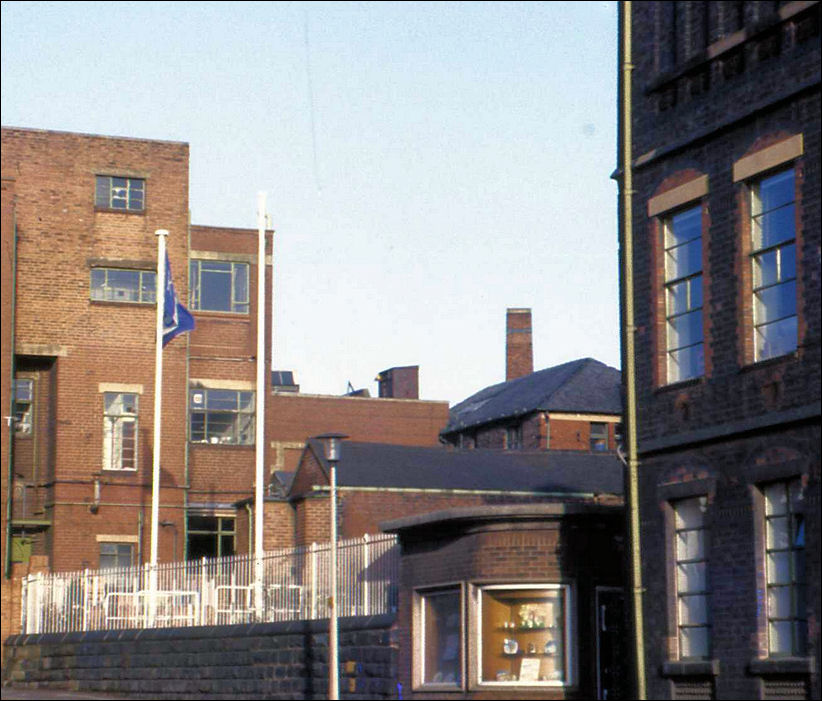
the
same view after the Holy Trinity Church had been demolished
photo: Ewart Morris
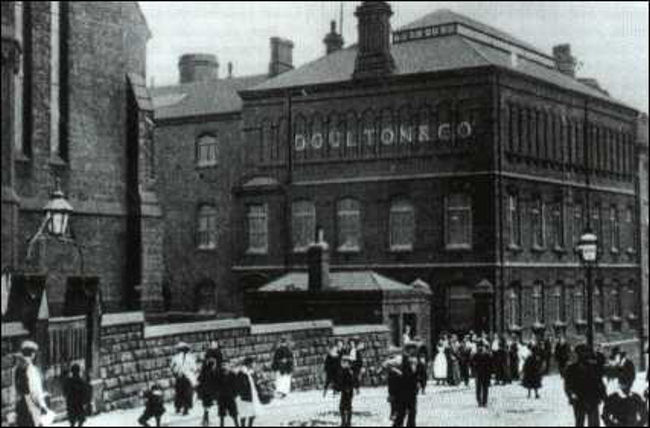
a
well known postcard of the workers home time at Doulton & Co in Nile
Street, Burslem
- photo c.1900 -
the Holy Trinity Church can be on the left, the large
Doulton & Co building was the china works which was added in 1884
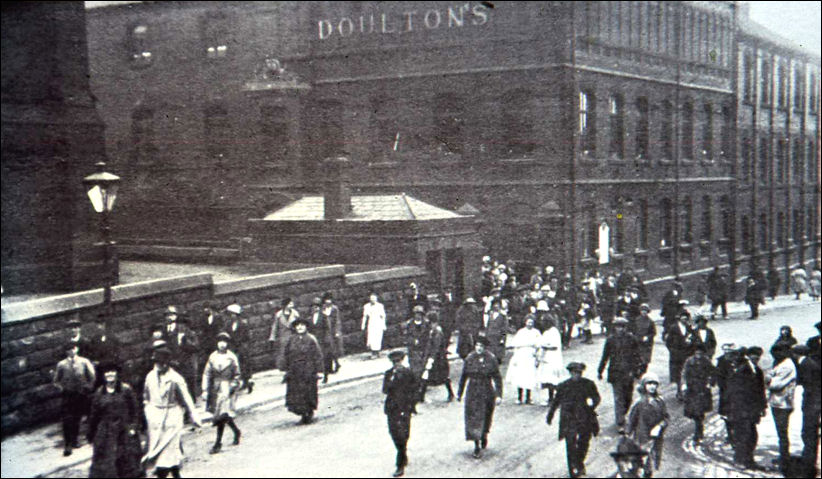
slightly later postcard
of a similar scene - now simply called Doulton's
(compare the change in entrance to the church and the different
street lamp)
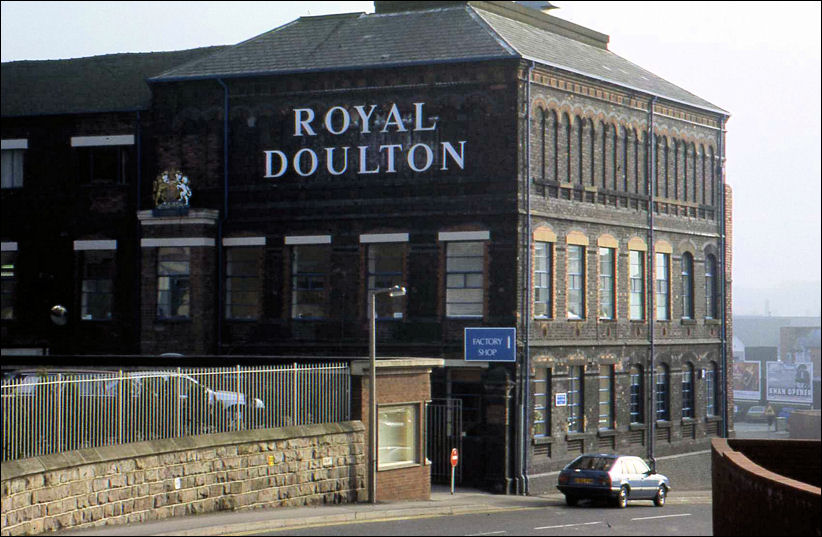
Royal
Doulton - the view c.1980's
photo: Ewart Morris
1901
the Burslem based Doulton works was granted the Royal Warrant
1959 the Holy Trinity Church was demolished
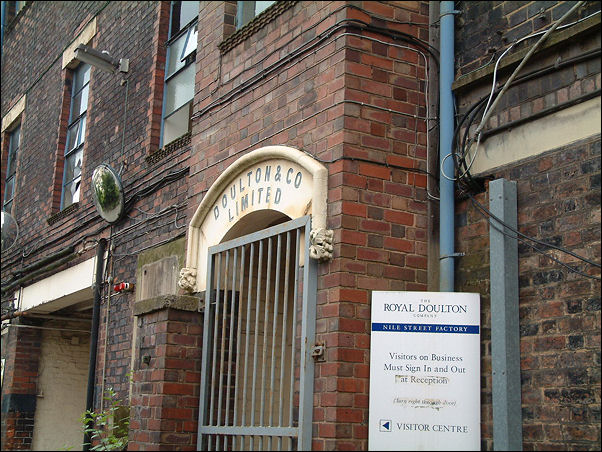
entrance to the
original Doulton & Co. Ltd china works
photo: Steve July 2008

Royal Doulton Art
Deco style Factory shop, Burslem
photo: July 2008
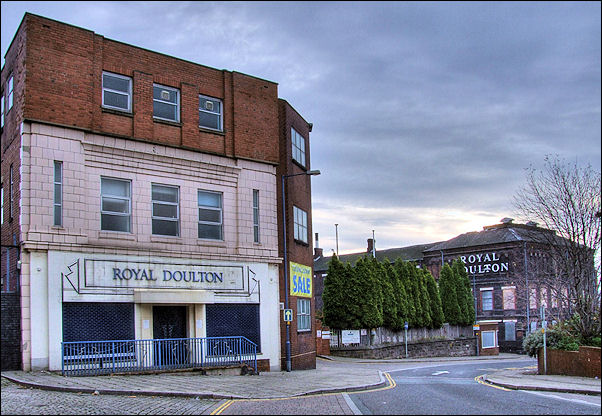
Doulton Factory shop
and Potery Works, Nile Street
photo: 2007
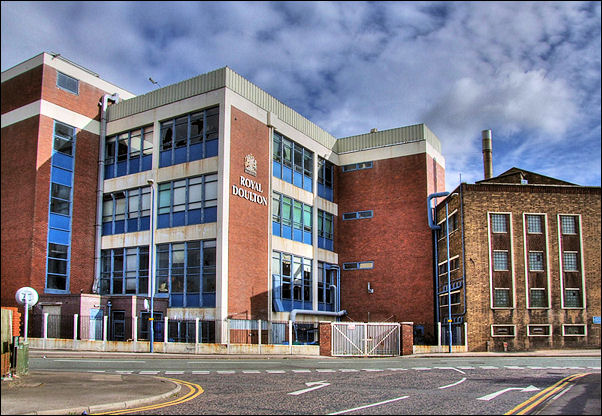
The main Doulton works on the
corner of Nile Street, and Zion Street
photo: © Brian Deegan - Oct 2007
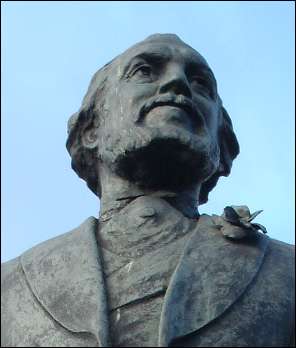
Sir Henry Doulton
(1820-1897)
installed at Market Place, Burslem
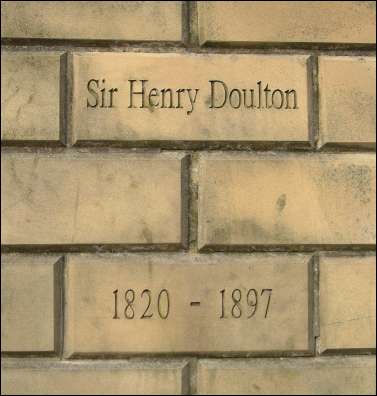
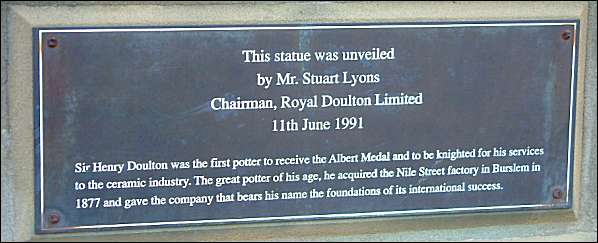
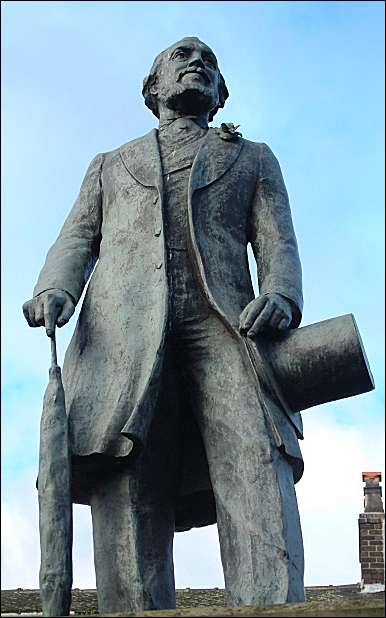
The statue depicts Sir
Henry Doulton wearing formal Victorian dress;
his left hand holds his top hat, his right hand his umbrella,
and he wears a flower in his button hole.
| Nile Street Works
That these works were built upon the site of an early pottery is evidenced by fragments of pitchers, 'porringers', and other salt-glazed domestic vessels of 'red and yellow clay marbled together', being exhumed at one time or other during the alterations. Messrs. Riley, who removed from here to the Hill Works, were succeeded by James Cormie, uncle of Thomas Pinder, who traded under the style of Pinder, Bourne & Co. China was at one time made here, but then only printed, enamelled, and gilt earthenware, fine red-ware, jet-ware, and sanitary goods. The red-ware or terra-cotta of Pinder, Bourne & Co. was of fine, hard and durable quality; and the vases, spillcases, and other articles richly enamelled and gilt in arabesque and other patterns were remarkably good. Among other specialities were flower-vases and jardinieres skilfully painted in birds, flowers, etc. The firm patented improvements in ovens and in steam printing-presses; but the latter, having excited the hostility of the workmen at the time of the riots in 1842, were abandoned. The firm received medals at the London and Paris Exhibitions of 1851, 1855 and 1867. The marks were a garter with the name of the pattern and initials P.B. & Co. surmounted by a crown and encompassed with a wreath of laurel, and the triangle-shaped mark. Messrs. Pinder, Bourne & Co. were of the period 1862-82. After the works passed into the hands of Messrs. Doulton, in 1882, immense strides in improvements in every department were made, and the productions rank with the very best. This is especially noticeable in the body of the finest earthenware, which arrived at a state of perfection. As a rule, earthenware is, by the generality of people, looked upon as inferior in every way to china and as unworthy of the high artistic treatment lavished upon that favoured body. This, however, is a mistake, and Messrs. Doulton wisely directed their energies not only to its improvement but its Perfection. In this they were successful, and the result is that their earthenware has all the fineness and beauty, the artistic treatment, and the exquisite finish of the best classes of porcelain with, in addition, a softness of surface and a delicious creaminess of tone. Messrs. Doulton employed a large number of first-class artists in the decoration of the ware, and new studios were fitted up to meet the requirements of the increased demand that sprung up for high-class art-productions. In 1884, Doulton's Burslem factory commenced the manufacture of fine porcelain, a product for which they are now internationally famous. The artists include P. Curnock, D. Dewsbury, F. Hancock, H. Mitchell, E. Raby and G. White. Jewitt's: Ceramic Art of Great Britian 1800-1900 |
|
related pages external links also see..
|